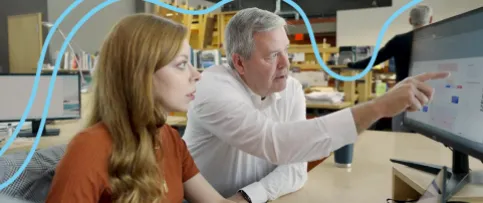We recently had the chance to catch up with Ross Hamilton and learn more about his experiences on his path to licensure. Ross shares his unique experiences and advice for candidates along the same path.
At what point in your life did you decide to pursue architecture?
I came later to architecture than some. When pursuing a degree in engineering didn’t feel right, I transferred to the Ohio State University to study architecture. Luckily, my high school offered a single course in drafting, and something about that class stuck with me. I fell in love with architecture during my first studio. Architects have a way of seeing the world that resonates with me to this day. Understanding that the spaces we shape will impact the way people experience the world is a responsibility I take very seriously.
What did your path to licensure look like?
After a long job search waiting out the end of the recession, I was given an opportunity at Moody Nolan. With their support and encouragement, I learned I could pursue licensure through practical experience in lieu of going to graduate school to get a degree from a National Architectural Accrediting Board (NAAB) accredited program. I made a goal of getting my license as soon as possible after hitting the minimum of four years of practical experience that Tennessee requires and stuck to it! I am now documenting the last hours I need to get my NCARB Certificate through the new Two Times the Architectural Experience Program® (AXP®) pathway.
Were there any struggles you faced while on the path to licensure, and how did you overcome them?
Pursuing my license through a non-traditional pathway, I spent a lot of time checking and rechecking the requirements for my state. While I was happy to confirm I could get my license through the experience pathway in lieu of counting on my education, I was also concerned about potentially being limited to states with this experience equivalent. With the introduction of the Two Times AXP pathway, I am excited that practical experience is being recognized as equivalent to an advanced degree for NCARB certification and the associated opportunities for reciprocity.
Editor’s Note: Through the Two Times AXP path, architects without a degree from a NAAB-accredited program can meet the education requirement for certification by documenting two times the hours outlined in the AXP. Find out more about education alternatives for licensure.
How did you stay motivated to finish the Architecture Registration Examination® (ARE®)?
I was tired of being introduced as an architect by friends and having to clarify that I didn’t technically have my license yet. I worked very hard to be able to answer a simple question with a simple answer. “What do you do?” “I am an architect.”
What did your study method look like while preparing for your exam?
I studied for all the exam divisions at once. After I reviewed the study materials for all the sections, I scheduled tests once a month. For each test, I spent three weeks refreshing my memory on that section, knocked out the section, and then took a week off. Wash, rinse, and repeat!
What advice would you give licensure candidates?
To be a successful architect, you must be well-rounded in your knowledge and experience. Use your required AXP hours and exam studying to broaden your knowledge base. If you’re having trouble getting support at your work, help them to understand that studying for these exams will make you more knowledgeable about the practice of architecture and better able to do your job. Plus, they can charge more for your hours once you’re licensed!
What is your favorite project you have worked on so far?
My favorite project has been the Poindexter Village housing development in Columbus, Ohio. This was one of my first projects at Moody Nolan, and I was really thrown into the deep end. Luckily, I had a wonderful mentor in Yanitza Brongers-Marerro, and she supported me while I learned how to put together a legible set of documents. Years after I had finished the project, I remember visiting Columbus and seeing the finished development for the first time. It was amazing to remember how green I was pulling those documents together and now see the model I built in Revit brought to life.



